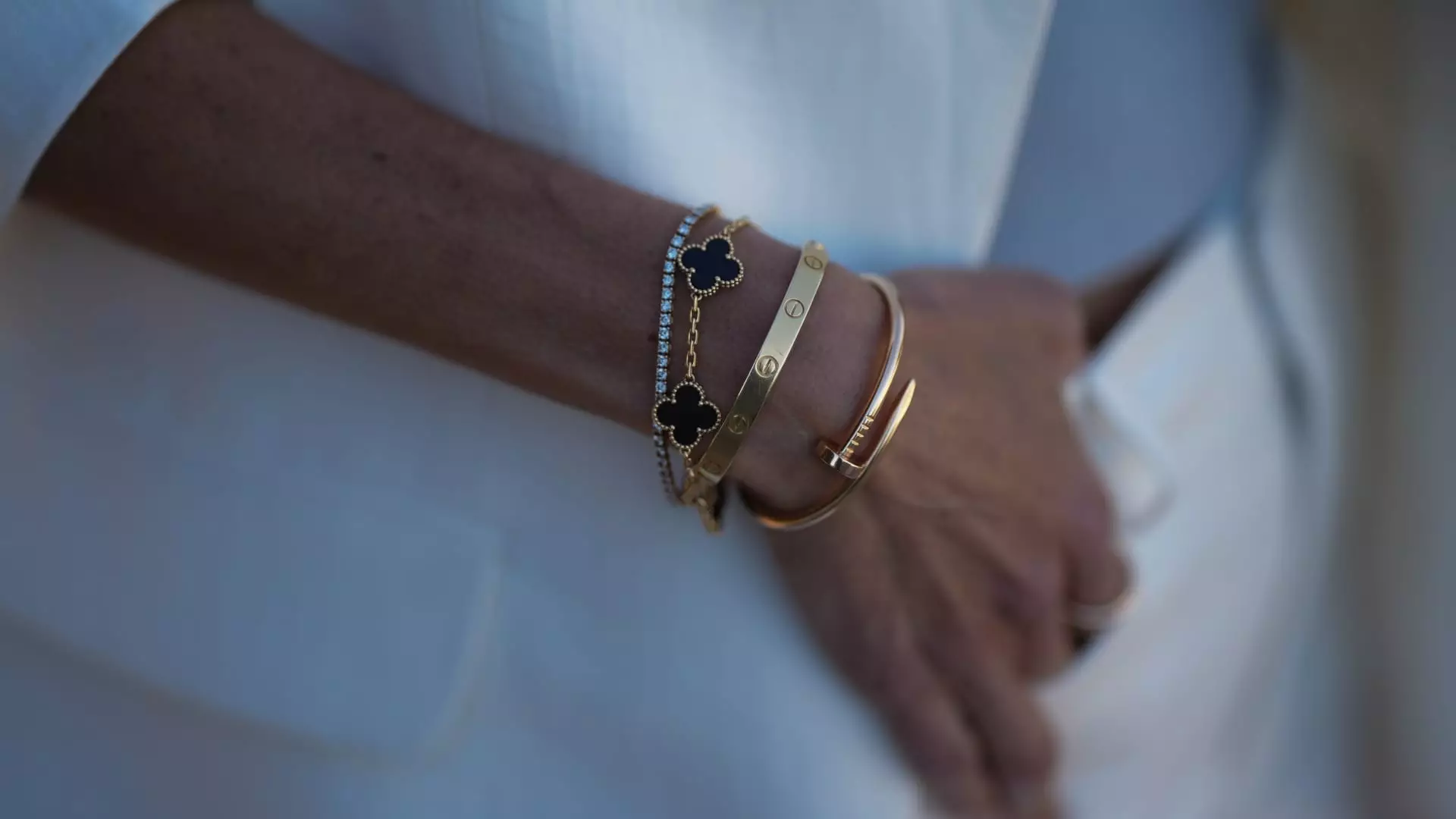For months, the luxury retail industry held onto the hope that 2025 would mark a vibrant comeback after a brief glimmer of optimism in the final quarter of the previous year. A surge in holiday shopping and global political euphoria seemed to promise a new dawn for high-end brands battered by economic headwinds. Yet, the latest data suggests a starkly different reality: luxury spending in the United States is slipping rather than soaring. According to Citigroup’s comprehensive analysis of transaction data, credit card expenditure on luxury goods during the first five months of 2025 has actually declined compared to the same period last year—a clear signal that the anticipated renaissance may be nothing but a mirage.
While May displayed marginal resilience with a 1.7% year-over-year decline, this modest figure is overshadowed by steeper drops in previous months, with April registering a near-double-digit decline. The overall picture reveals a market teetering on the edge of stagnation or decline, shattered hopes of a post-election euphoria translating into increased high-end consumer engagement. This isn’t just a cyclical downturn; it’s a reflection of fundamental shifts that call into question the supposed resilience of luxury retail.
The Divergence of Categories: Jewelry Holds Its Ground
Not all luxury sectors are uniformly suffering. Among the categories, jewelry emerges as a rare bright spot amid the gloom. Unlike handbags or ready-to-wear apparel, jewelry sales have shown a consistent upward trajectory since September of the previous year, culminating in a 10.1% surge in May compared to 2024. More intriguingly, jewelry’s performance isn’t solely driven by increased spending per customer but also by an expanding clientele, with more individuals purchasing at higher price points.
This divergence highlights an underlying shift in consumer perception. Jewelry arguably offers more than just adornment; it’s increasingly seen as an investment, a store of value in uncertain economic times. The perception that jewelry holds intrinsic worth—especially in the face of rising gold prices—gives it an edge over other luxury products, which often lack such tangible backing. Experts suggest that consumers are willing to pay a premium for pieces with emotional resonance, whether as gifts or symbols of personal milestones, amplifying jewelry’s desirability amidst an otherwise declining luxury landscape.
A Luxury Class Divided: The Expensive Truth About Handbags and Watches
In stark contrast to jewelry’s outperforming sales, other sectors such as handbags and watches are experiencing stagnation or decline. Handbag manufacturers, who have steadily increased prices by 30% to 40% since the pandemic, have yet to see their consumers receive proportional value. Limited rhythmic innovation and homogeneity in design—most bags from different brands now look strikingly similar—have contributed to consumer fatigue. Despite some promising collections for Fall and Winter 2025, the overall outlook suggests that the luxury handbag market may be approaching its saturation point, where further price hikes could push prices beyond what outweighs consumer perceived value.
Luxury watches, on the other hand, tell a mixed story. Although recent data indicates a 14.7% spike in spending compared to last year, this surge is largely driven by retailer stocking strategies and manufacturing surges in anticipation of tariffs rather than genuine consumer demand. The top brands, facing a 10% decline in May sales, hint at a fragile confidence among high-end watch enthusiasts. The recent headlines about Swiss export booms were more reflective of supply-side distortions than organic market growth. These signals suggest that the seemingly robust numbers are not necessarily indicative of a genuine resurgence in demand but are instead tactical moves by brands reacting to political and economic uncertainties.
The Political and Economic Headwinds That Threaten a Real Recovery
Much of the optimistic projections for luxury retail hinge precariously on macroeconomic factors—most notably, the strength of the U.S. dollar and political stability. The dollar’s 10% decline this year hampers American consumers’ ability to enjoy abroad luxury shopping or investments, a crucial craving for high-net-worth individuals. The recent extension of reciprocal tariffs, while temporarily delaying the damage, is merely a delaying tactic. If tariffs or geopolitical tensions escalate, it could further dampen already fragile consumer confidence.
Chauvet, a Citi analyst, notes that external shocks—rising oil prices stemming from geopolitical conflicts such as Iran-Israel tensions—pose significant risks to a nascent recovery. The luxury sector, inherently sensitive to macroeconomic shifts, is unlikely to withstand prolonged instability. When consumers see their purchasing power eroded by inflation or currency fluctuations, their discretionary spending, especially on luxury items viewed as non-essential, tends to shrink.
Is Luxury Retailering on the Brink of Structural Change?
What is increasingly apparent is that the so-called luxury rebound may be superficial—a temporary blip rather than a sustainable trend. The market’s uneven performance shows that the most resilient products are those with intrinsic value, like jewelry and gold. Meanwhile, sectors driven purely by branding and perceived status—handbags and watches—appear more susceptible to market sentiment and macroeconomic pressures.
Luxury brands have been slow to innovate or diversify their offerings, resulting in a static market where differentiation is minimal. Consumers are becoming more discerning, scrutinizing the value they extract from their purchases. High prices no longer guarantee loyalty or sustained growth, especially when the economic environment invites caution and skepticism. If anything, these signs point toward a potential recalibration in luxury spending, favoring rationality over impulsivity—an evolution that might favor classic, investment-minded products over transient fashion.
—
Note: This article reflects my critical analysis and point of view, suggesting that the anticipated luxury sector recovery might be a fragile illusion, heavily influenced by macroeconomic factors and internal industry stagnation. The true test lies ahead.

